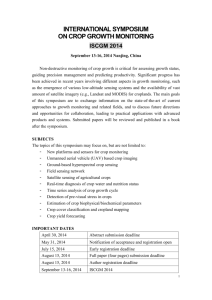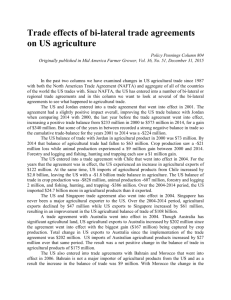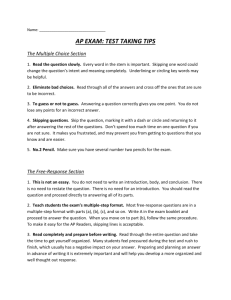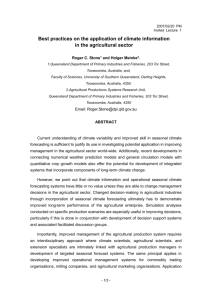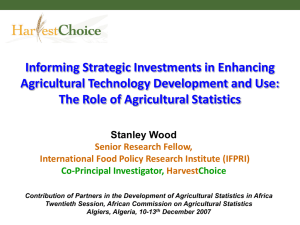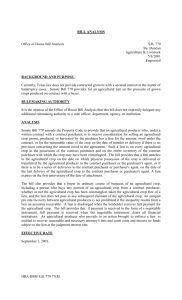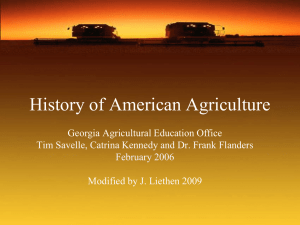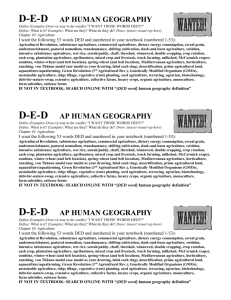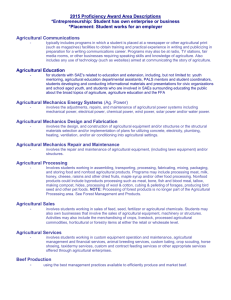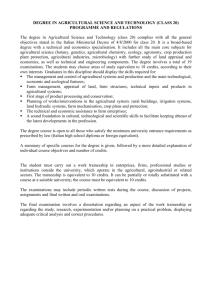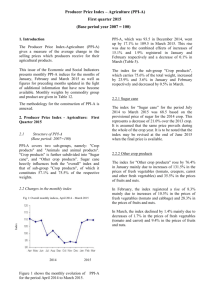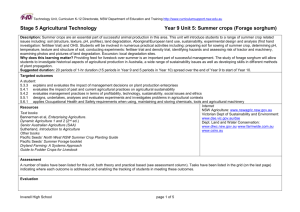10RRPribbenow_Qualitative - the Biology Scholars Program Wiki
advertisement
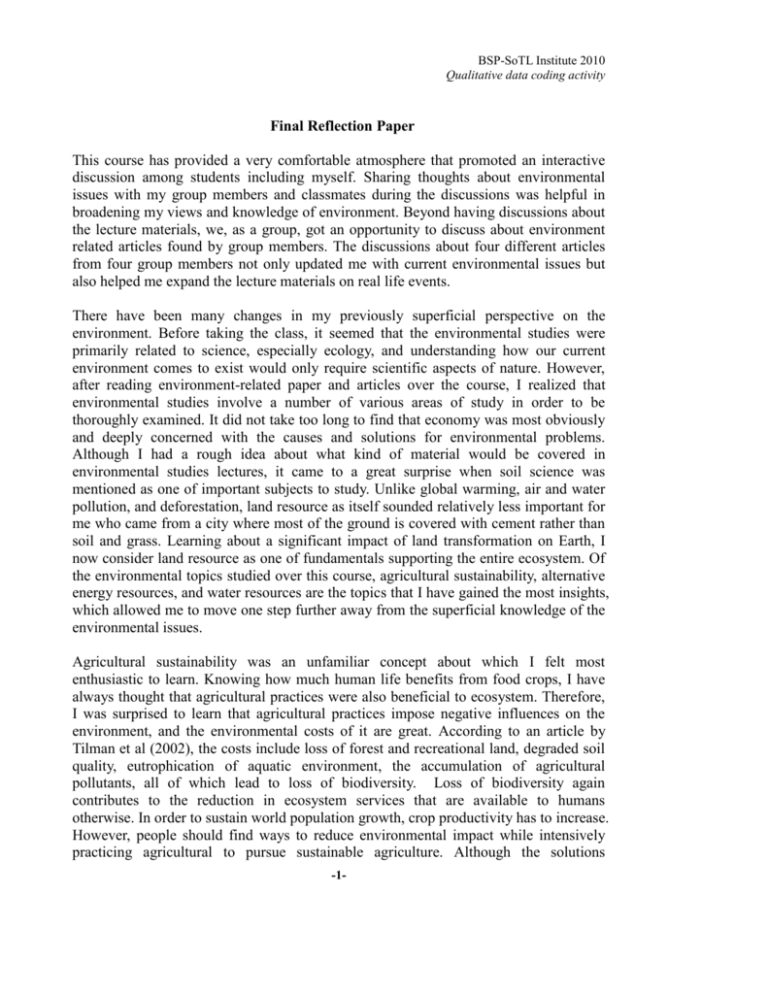
BSP-SoTL Institute 2010 Qualitative data coding activity Final Reflection Paper This course has provided a very comfortable atmosphere that promoted an interactive discussion among students including myself. Sharing thoughts about environmental issues with my group members and classmates during the discussions was helpful in broadening my views and knowledge of environment. Beyond having discussions about the lecture materials, we, as a group, got an opportunity to discuss about environment related articles found by group members. The discussions about four different articles from four group members not only updated me with current environmental issues but also helped me expand the lecture materials on real life events. There have been many changes in my previously superficial perspective on the environment. Before taking the class, it seemed that the environmental studies were primarily related to science, especially ecology, and understanding how our current environment comes to exist would only require scientific aspects of nature. However, after reading environment-related paper and articles over the course, I realized that environmental studies involve a number of various areas of study in order to be thoroughly examined. It did not take too long to find that economy was most obviously and deeply concerned with the causes and solutions for environmental problems. Although I had a rough idea about what kind of material would be covered in environmental studies lectures, it came to a great surprise when soil science was mentioned as one of important subjects to study. Unlike global warming, air and water pollution, and deforestation, land resource as itself sounded relatively less important for me who came from a city where most of the ground is covered with cement rather than soil and grass. Learning about a significant impact of land transformation on Earth, I now consider land resource as one of fundamentals supporting the entire ecosystem. Of the environmental topics studied over this course, agricultural sustainability, alternative energy resources, and water resources are the topics that I have gained the most insights, which allowed me to move one step further away from the superficial knowledge of the environmental issues. Agricultural sustainability was an unfamiliar concept about which I felt most enthusiastic to learn. Knowing how much human life benefits from food crops, I have always thought that agricultural practices were also beneficial to ecosystem. Therefore, I was surprised to learn that agricultural practices impose negative influences on the environment, and the environmental costs of it are great. According to an article by Tilman et al (2002), the costs include loss of forest and recreational land, degraded soil quality, eutrophication of aquatic environment, the accumulation of agricultural pollutants, all of which lead to loss of biodiversity. Loss of biodiversity again contributes to the reduction in ecosystem services that are available to humans otherwise. In order to sustain world population growth, crop productivity has to increase. However, people should find ways to reduce environmental impact while intensively practicing agricultural to pursue sustainable agriculture. Although the solutions -1- BSP-SoTL Institute 2010 Qualitative data coding activity proposed by Tilman such as drip and pivot irrigation, crop rotation, manuring and balanced fertilizer application, are possible, it is necessary to educate farmers of appropriate agricultural practices first to make Tilman’s solutions feasible. Lectures on renewable or alternative energy resources have provided an insight that environmental issues are connected with economic issues. Initially I did not understand why the commercialization of energy-efficient technologies was so slow when compared to the fast and fleeting commercialization of other fancy looking technologies. For example, while the relatively complete transition from tube TVs to the HDTVs and LCD TVs has occurred in the United States market for the past decade, the development and the public market of energy-efficient cars seems to progress slowly at the same time period. The answer to this question could be found in one of the Policy in Actions of the class textbook, where it said “technical change is endogenous, meaning it is determined by conditions inside the economic system.” The well known supply and demand relationship can explain the endogenous nature of developing and commercializing energy-efficient technologies. There has to be a public demand that arises from the increased cost of natural gas in order to cause manufacturers to invest money on the development of energy efficient vehicles and to put them on the market to be sold for a fair margin of profit. I felt water resource was the most difficult topic to be covered in the course, but it was most worth of learning. Aware of the unique property of water, I thought I was well prepared for the lectures on water resources. I knew basic principles of hydrologic cycles with weather and climate, and was well aware of increasing number of nations facing water scarcity. Yet, there was more to be learned about water. Especially, geological aspects of groundwater were very new and explained the phenomena that seemed very bizarre before. The two pictures in the textbook, one showing a subsidence in the San Joaquin Valley of California and the other showing how fast the Santa Cruz River has run dry in less than half century were the most extreme examples of power of water. Both subsidence and a river running dry are consequences of humans’ unsustainable use of water, particularly called overdrafts in this scenario. I have come to realize that sustainable use of water is deeply connected to the agricultural sustainability since it was reported in Vitousek’s article that about 70% of human water use is for agricultural practices (1997). It again reminded me of impact on crop production if humans continue to use water unsustainably. Taking this course gave me an opportunity to look more closely into the environment in which my family and I live and will live in future. It scares me that the future environment does not look promising. I became obvious that if people has to initiate to reduce their ecological footprint to leave this world a better place for the next generations. I feel more responsibility now more than ever in my life and at the same time I am very excited to use the knowledge gained in this course to inform close friends of the necessity of changing the lifestyle along with myself. -2-
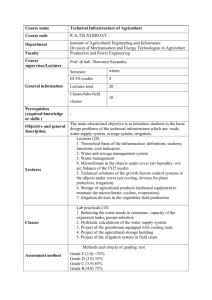

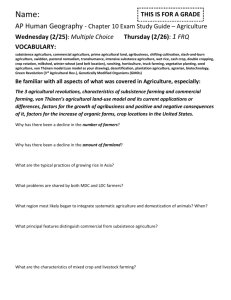

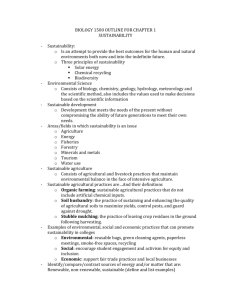
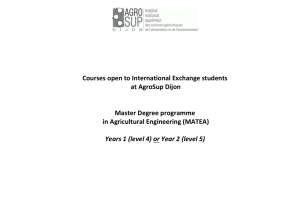


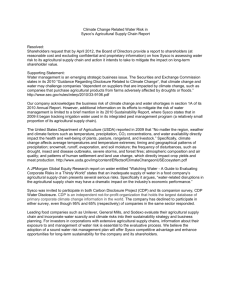
![AGRICULTURE TRANSFER [AG] AG 121--4 hours--Introductory Animal Science [3-2]](http://s2.studylib.net/store/data/010303562_1-d81513c9410ff047a4e6c47654724cfa-300x300.png)
